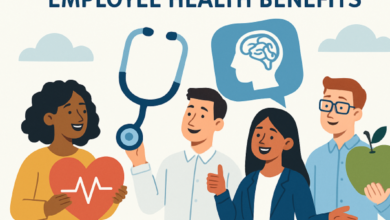
When Dental Anxiety Becomes Public Health: The Quiet Role of Sleep Dentistry
Dental anxiety is often framed as a private burden—an individual’s fear of drills, needles, or the sterile smell of the clinic. But in truth, when millions avoid care because of fear, the issue transcends personal discomfort and enters the realm of public health. At this intersection of psychology, medicine, and society, sleep dentistry emerges as a quiet but powerful ally in restoring access to care and reshaping the narrative around oral health.
The Unseen Epidemic of Fear
Globally, studies suggest that between 9% and 20% of adults suffer from some degree of dental anxiety, and a significant portion fall into the category of severe phobia. For these patients, the thought of a dental appointment triggers a physiological cascade—sweaty palms, racing heart, nausea, or even panic attacks. This is not mere discomfort; it is a barrier that delays treatment, allowing preventable cavities to advance into abscesses, gum disease into systemic inflammation, and missing teeth into malnutrition.
When enough individuals avoid the dentist out of fear, society faces higher healthcare costs, reduced workforce productivity, and a greater burden of chronic disease. Managing severe dental anxiety is no longer just about calming one patient—it is about reducing the ripple effects of untreated oral disease across communities.
Sleep Dentistry as a Public Health Tool
Sleep dentistry—a broad term encompassing oral sedation, IV sedation, and general anesthesia—offers a clinical pathway through the wall of fear. By creating a state of deep relaxation or unconsciousness, it allows patients to undergo procedures that might otherwise feel impossible. While traditionally reserved for complex surgeries, sedation is now being applied to routine treatments such as fillings, cleanings, and root canals when anxiety is the dominant barrier.
This expansion is not only compassionate; it is strategic. A population more willing to seek care early will present with fewer emergencies and less severe disease, reducing strain on hospital systems and public health budgets. In this sense, sedation dentistry operates as a preventive measure at scale—helping communities move from crisis-driven oral care to a healthier baseline.
Anxiety as an Oral Health Inequality
One of the underappreciated dimensions of dental anxiety is its disproportionate impact on vulnerable populations. Children who have had painful early experiences, survivors of medical trauma, individuals with developmental conditions, and those who have been historically underserved by healthcare systems all report higher levels of dental fear.
Dental anxiety does not affect all groups equally—it often weighs most heavily on children with early traumatic experiences, individuals with disabilities, and communities that have historically had limited access to compassionate oral care. This unequal burden creates a cycle where those who most need regular treatment are the ones most likely to avoid it, leading to worsening disease and systemic health problems. Here, sleep dentistry becomes more than a clinical option; it becomes a tool for equity. By lowering the psychological barrier to care, sleep dentistry opens doors for patients who might otherwise remain outside the healthcare system.
This creates a cycle of inequality: those who most need regular care are the ones most likely to avoid it. Sleep dentistry, by lowering the psychological threshold to treatment, becomes an equalizer. It offers a way to break cycles of avoidance and ensures that marginalized groups are not left behind in the pursuit of better oral health.
See also: The Advantage of Comprehensive Employee Health Coverage
Beyond Fear: The Physiological Logic
There is also a physiological argument to be made. Severe anxiety floods the body with stress hormones like cortisol, which complicate healing and increase the perception of pain. A patient who is panicked in the chair is not only harder to treat but may also experience slower recovery. Sedation interrupts this loop, allowing procedures to be carried out more efficiently and with fewer complications. In this way, sleep dentistry is not simply about managing severe dental anxiety—it is about optimizing treatment outcomes.
A Cultural Shift in Oral Care
Historically, dentistry has struggled with its cultural image: the drill-wielding dentist as a figure of fear is embedded in movies, jokes, and even childhood stories. Sleep dentistry challenges this narrative by reframing the dental visit not as an ordeal to be endured, but as an experience that can be free from memory, pain, or terror.
When communities begin to see dentistry through this gentler lens, patterns of avoidance can shift. Parents who undergo sedation may be more willing to bring their children for preventive visits. Adults who conquer their phobia may share positive stories with peers. Slowly, the culture of fear is replaced by a culture of possibility.
The Ethical Dimension
Of course, widespread sedation raises important ethical questions. Sleep dentistry must never be a blanket solution to systemic issues in oral healthcare. It cannot replace the need for gentle chairside communication, education, and behavioral techniques that empower patients to cope with care over the long term. Instead, sedation should be viewed as part of a broader strategy—one that respects autonomy, minimizes trauma, and fosters trust.
The quiet power of sleep dentistry lies in its ability to bridge the gap between need and access. For some, it will be a temporary bridge, helping them re-enter the cycle of care until trust is rebuilt. For others, it will remain a permanent solution, ensuring they never again face the crippling burden of fear.
As oral health continues to be recognized as inseparable from systemic health, addressing dental anxiety on a societal scale will be crucial. If left unchecked, this silent epidemic could undermine efforts in preventive care, nutrition, and even mental health. But with sleep dentistry integrated into public health strategies, there is an opportunity to dismantle one of the most enduring barriers to care.
In the end, managing fear is not just an act of kindness—it is an act of public health. By giving patients permission to rest through their greatest anxieties, we create a ripple effect of healthier smiles, stronger communities, and a culture where dental care is no longer a source of dread but a pathway to well-being.




